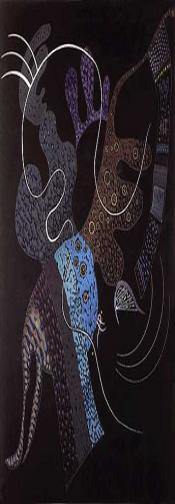
One of the most interesting aspects of string
theory was not created by a string theorist: it is the idea of dimensions
being “curled up” in a finite amount of space, an idea that is crucial to
the functionality of string theory. The idea was introduced in the 1920’s
as the Kaluza-Klein theory, and was designed to incorporate
electromagnetism into general relativity. The team, Kaluza and Klein, found
that if they treated the theory of general relativity in five dimensions,
but “curled” one dimension up, they ended up with a four-dimensional theory
plus electromagnetism. The theory worked because electromagnetism is a U(1)
gauge theory, which is a group of rotations around a circle. If the
electron is assumed to have a degree of freedom corresponding to a point on
a circle, and this point can vary on the circle as we move around in
spacetime, then a photon is required and the electron obeys Mawell’s
equations. The Kaluza-Klein model was just a geometrical explanation for
this circle as a curled-up fifth dimension. Thanks to the insightful pair,
String Theory was given the boost it needed and Science Fiction a whole new
set of dimensions to play in. Once the fifth dimension was introduced,
there was nothing to stop string theorists from busting out another five to
flesh out their theory and fill in the gaps. Lucky for us (and unluckily
for the theorists who hope to prove it), these dimensions are curled up at
the Planck length, a distance we are nowhere near close to measuring. It’s
a good thing we can’t: if string theorists are right: supposedly, the
universe began at the Planck length with a couple of strings. Tremendous
amounts of energy would be available, and all kinds of strange behavior…if
we could poke around at that level today, some theorists predict we could
end up poking around at a whole new universe.


next page
